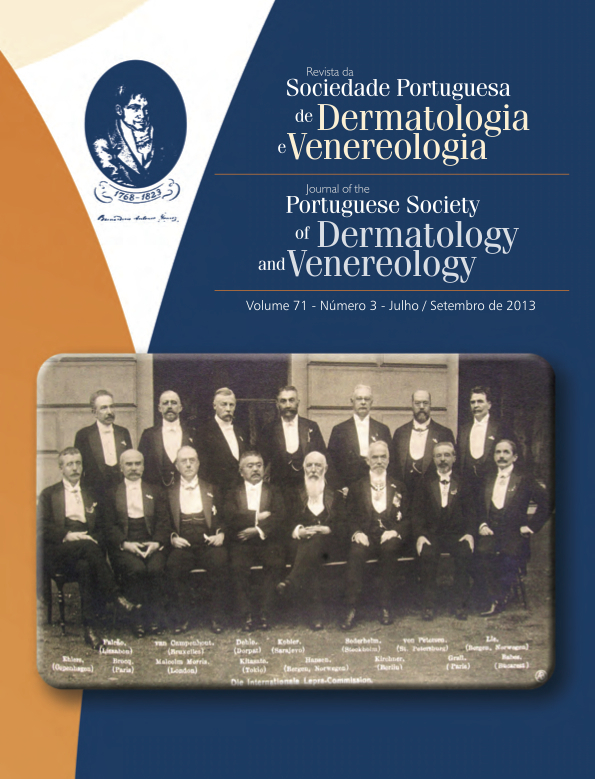IMUNOGLOBULINAS ENDOVENOSAS EM DERMATOLOGIA – EXPERIÊNCIA CLÍNICA DE 7 ANOS NO HOSPITAL DE BRAGA
Resumo
Introdução: Nos últimos anos tem aumentado a experiência clínica com o uso de Imunoglobulinas Endovenosas (IgEv) em Dermatologia. Apesar da informação limitada na literatura, a utilização off-label das IgEv tem demonstrado eficácia na terapêutica de várias dermatoses refratárias aos tratamentos convencionais.
Material e métodos: Efetuou-se um estudo retrospetivo dos doentes com patologia dermatológica tratados com IgEv entre Janeiro de 2004 e Outubro de 2011 no Serviço de Dermatologia do Hospital de Braga. Foram analisadas as características demográficas e clínicas, as terapêuticas efetuadas, a resposta clínica e o perfil de segurança.
Resultados: Foram tratados 21 doentes com IgEv em 10 diferentes patologias dermatológicas: quatro doentes com Pênfigo Vulgar [2 com resposta completa (RC), um com resposta parcial (RP) e outro que interrompeu o tratamento por efeito lateral grave]; dois doentes com Penfigóide Bolhoso (um com RC e outro com RP); três doentes com Necrólise Epidérmica Tóxica (NET) com RC; dois doentes com Dermatomiosite (ambos com RP); quatro doentes com Urticária Crónica (um com RC, um com RP, um que não respondeu e outro que suspendeu o tratamento por efeito lateral); dois doentes com Vasculopatia Livedóide com RP; um doente com Síndrome CREST que não melhorou; um doente com Escleromixedema com RP; um doente com Pioderma Gangrenoso com RC e uma doente com Dermite Atópica que interrompeu o tratamento na sequência de gravidez. Com excepção dos 3 doentes com NET, em todos os outros a doença havia sido refratária aos tratamentos sistémicos convencionais. Conclusões: Apesar de a nossa experiência ser limitada, o tratamento com IgEv pode ser benéfico em determinadas patologias que não melhoram com o tratamento clássico. Atendendo ao seu custo elevado e efeito terapêutico variável, o seu uso deve ser criterioso até que mais estudos definam a relação risco-benefício.
Downloads
Todos os artigos desta revista são de acesso aberto sob a licença internacional Creative Commons Attribution-NonCommercial 4.0 (CC BY-NC 4.0).








